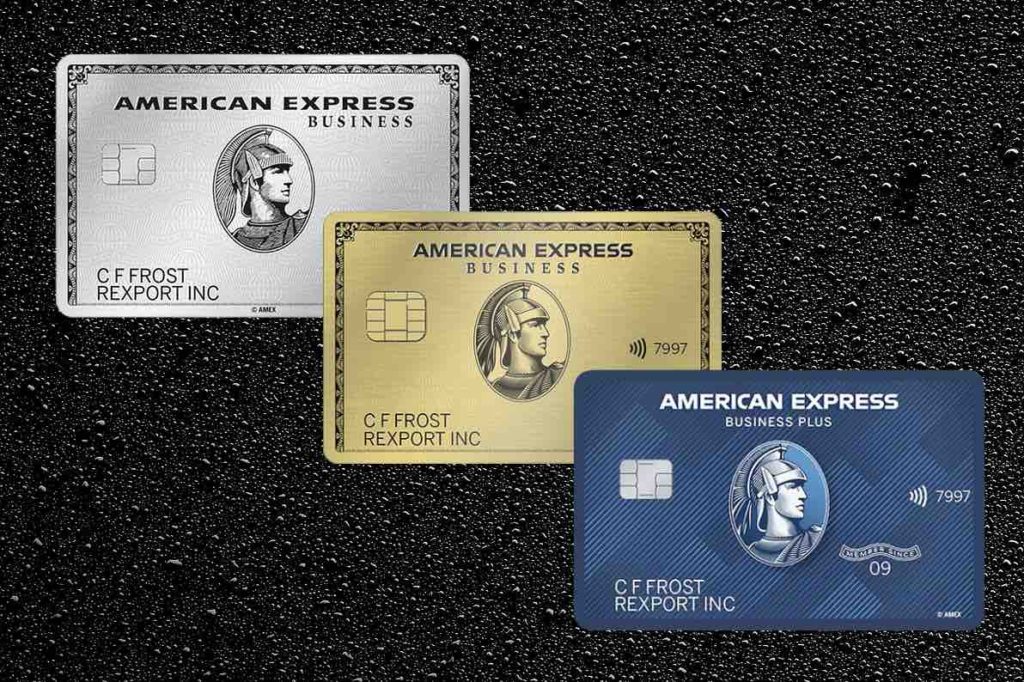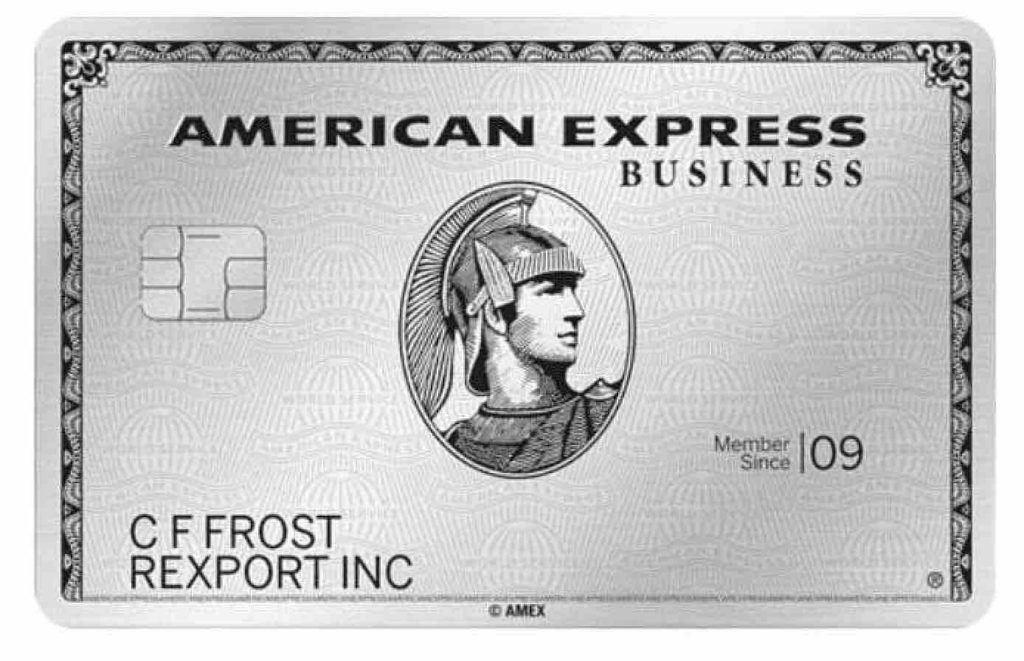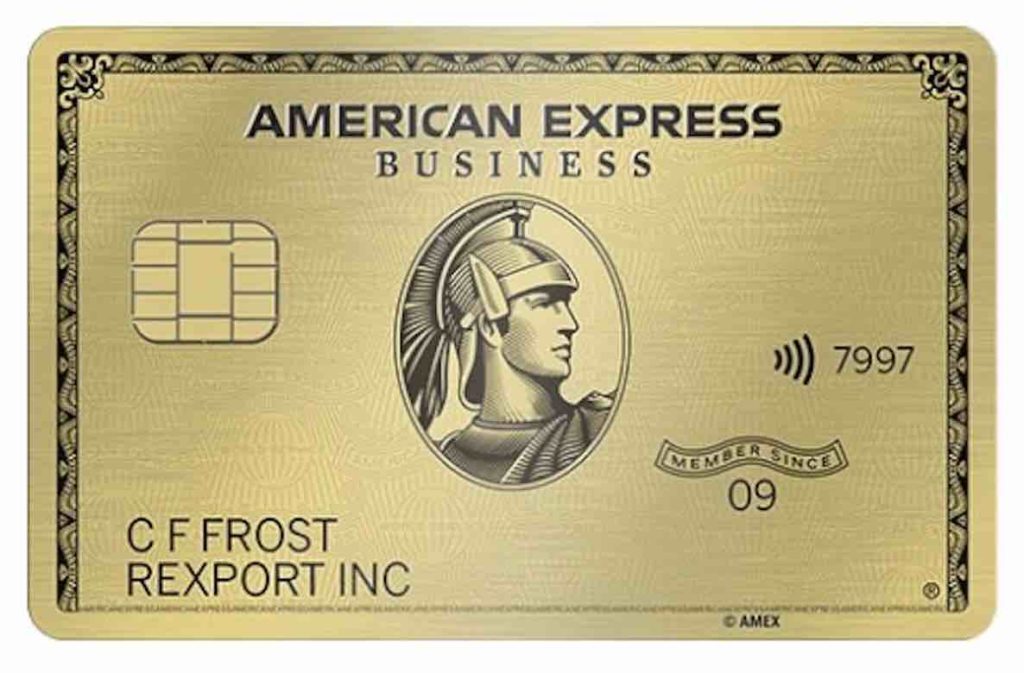by Daniel | Last Updated August 5th, 2021

We may earn a commission for purchases using our links, at no cost to you.
So today I am going to review and compare three different American Express Business credit cards, The Platinum, Gold, and Blue Business Plus.
Now obviously the Platinum card will come with the most benefits but I just wanted to take a closer look into what you actually get for the extra money that you spend.
And if you are actually trying to decide what card to get, hopefully, this review can help you make that decision.
Annual Fee
So the first thing we’ll take a look at is the annual fee of each card.
And to begin with, the Amex Business Platinum Card is currently $595, which interestingly enough is $100 less than the personal Amex Platinum Card.
Next up the Amex Business Gold Card is $295 per year, and finally, the Amex Blue Business Plus card has no annual fee at all.
Sign Up Bonus
So in this next section, let’s take a look at the sign-up bonus that is offered with each card.

To begin with, the Amex Business Platinum card currently offers the ability to earn 100,000 membership reward points after you spend $15,000 within the first 3 months of opening the account, and according to the Amex Points Calculator, these points are worth up to $1,000 depending on what you redeem them for

Next up, the Amex Business Gold card is offering 70,000 membership reward points after you spend $10,000 within the first 3 months of opening the account, and these points are worth up to $700.

And finally, the Amex Blue Business Plus card is offering 15,000 membership reward points after you spend $3,000 within the first 3 months of opening the account, and these points are worth up to $150.
So for this section, the Amex Platinum Business card clearly offers the most potential the earn a lot of points, 100,000 to be exact, but it does require you to spend at least $15,000 in the first 3 months to get them, whereas the Blue Business Plus card offers just 15,000 bonus points but you only need to spend $3,000 to receive them.
Earning Points
So now let’s have a look at how each card can earn points, and this is another important thing to take into account when choosing a rewards credit card as the higher the points earning potential the more benefits you will get.

So starting with the Platinum Card you will receive the following points earnings –
5x points on flights and hotels that are booked through amextravel.com
1.5x points for purchases of $5,000 or more (and this is valid for up to a maximum of 1,000,000 points per calendar year).
All other purchases will receive 1 point per dollar spent.
Next up let’s see what the Gold card offers.

You will get the option to earn 4x points on 2 categories where your business spends the most on each billing cycle, and this includes categories such as airfare purchases directly from the airline, online, TV and radio advertising, computer-related expenses, gas stations, restaurants, and shipping.
Now the 4x points are limited to a total spend of $150,000 per calendar year.
All other purchases after this will receive 1 point per dollar spent.
And finally, let’s take a quick look at what the Blue Business Plus card offers.

You will get 2x points on any category up to a total of $50,00 per year, and anything after this will receive 1 point per dollar spent.
So for this section, the Platinum card offers the most points earnings as expected, but it is more travel-related for the 5x points earnings.
The Gold card seems to be a bit more flexible when earning 2x points as it has a wider range of options.
Finally, the Blue card is the easiest to earn 2x points as there is no specific category on what you can spend on to receive the 2x points.
Benefits and User Perks
Next, let’s take a look at some of the benefits and perks that come with each card.

So starting with the Platinum card you will receive a $200 airline credit that can be used for incidental fees such as checked bags and food orders placed onboard.
Next up let’s take a look at what the Gold card offers.

You get the same access to be part of the Fine Hotels and Resorts Program which gives you room upgrades, early check-in, and late check-out if available and a $100 credit to be used at the hotel.
Now let’s take a look at what the Blue Business Plus card offers.

The Amex Blue Business Plus card doesn’t have any extra benefits included, which is fair enough as it has no annual fee.
So as you can see the Platinum card offers a lot more benefits compared to the other two cards, even though it is substantially more expensive on an annual basis, if you do happen to spend a lot through your business, the card can quite easily pay for itself.
Insurance-related benefits
Now let’s go over all of the insurance-related benefits of each of the cards.

Starting with the Platinum card you will receive Trip Cancellation insurance and Trip Interruption insurance, both include coverage of up to $10,000 per trip and up to $20,000 per eligible card per 12-month period.
You will also get baggage insurance if you purchase the entire fare on your card, and this will cover up to $2,000 for checked baggage and up to a total of $3,000 for both checked and carry-on luggage.
Along with this, the card comes with car rental loss and damage insurance.
So if you pay for the entire car rental with your card you can choose to forgo the collision damage waiver from the car company which will save you money.
And this will cover up to a maximum of $75,000 for damage or theft to a rental car.
You also get trip delay insurance that will cover up to $500 per trip with the ability to make 2 claims per 12-month period, and this becomes valid if your trip is delayed for more than 6 hours.
There is also purchase protection, and this gives you up to 90 days to help protect any recent purchases if they are lost, stolen, or accidentally damaged, and it will cover up to $10,000 per occurrence and $50,000 per calendar year.
Next, you get an extended warranty with AMEX, And this will match the original manufactures warranty for up to 1 additional year as long as you purchase the item with your Platinum card, and this is only available for products that have a warranty of 5 years or less and that are sold in the United States.
And the coverage is up to $10,000 per item, with a maximum of $50,000 per calendar year.
Then finally, you get cell phone protection which will cover up to $800 per claim twice per 12-month period for repair or replacement costs following damage or theft. (Just note that a $50 deductible will apply to each approved claim)
Next up let’s see what the Gold card offers.

First up you will get a baggage insurance plan, and coverage can be provided for up to $1,250 for carry-on baggage and up to $500 for checked baggage.
There is the same extended warranty as the Platinum card, and you also get purchase protection but the limit per claim is only $1,000 per occurrence as opposed to the Platinum card which offers $10,000 per occurrence, but the maximum claim per year is the same at $50,000.
And lastly, let’s look at what the Blue Business Plus card offers.

You get the same extended warranty as both the Gold and Platinum card.
There is also the same purchase protection as the Gold card.
And finally, you get car rental loss and damage insurance which covers up to $50,000 for damage or theft of a rental car.
Expense Management Tools
In terms of expense management, all of the cards have similar tools at your disposal.
Both the Platinum and Gold cards offer you a pay overtime option which gives you the ability to carry over your balance with interest for purchases that are over $100.
Any purchases that are under $100 are due in full each month.
With the Blue Business Plus card, you get expanded buying power, and this gives you the ability to spend beyond your credit limit and it adjusts with your use of the card.
Final Thoughts
So as you can see there is quite a fair difference between each of the cards, obviously, the Platinum card offers the most benefits but it also cost $595 per year whereas the Blue Business Plus card is essentially free,
I do hope that this article gives you a better understanding of what you can get which each card, and maybe it will make it easier for you to decide which card will work best for your business.
